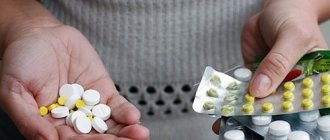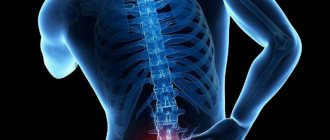Autotoxic type of toxicoderma
Autotoxic toxicoderma occurs due to the influence of allergens and various toxins that are formed in the body due to metabolic disorders. It can manifest itself in gastritis, stomach ulcers, pancreatitis, hepatitis and kidney diseases - pyelonephritis, hydronephrosis, chronic renal failure, in the case of malignant processes such as kidney adenocarcinoma, lung cancer, and intestinal cancer. Autotoxic toxicoderma tends to develop into a chronic form. Toxicoderma can also be caused by various metals used in dentures and various types of metal structures, which are used in traumatology and orthopedics. The reaction occurs due to the content of chromium, cobalt, nickel, molybdenum in them; they enter the patient’s blood and sensitize the body.
Toxic dermatitis: photos, treatment, causes and symptoms
Toxic dermatitis (toxicoderma, toxic-allergic dermatitis) is a dermatological disease that is accompanied by a violation of the skin. This is one of the allergic reactions to allergens that enter the body in various ways.
The irritant causes inflammation of the epidermis; in advanced cases, pathology is observed not only on the skin, but also on the mucous membranes of the eyes. The nature of toxicoderma is allergic in nature, so most often it is diagnosed in people with hypersensitivity to allergens.
In most cases, symptoms of the disease appear after prolonged use of antibiotics, sulfonamides, and medications containing quinine. The irritant reacts with the cytoplasm and penetrates the blood plasma, the enzyme system is inhibited, the reactivity of the body is disrupted, and blood vessels and tissues are damaged.
Therefore, under no circumstances should the disease be left unattended; at the first symptoms, you should contact a qualified dermatologist or immunologist.
Features of toxic dermatitis
A characteristic feature of toxic dermatitis is the cause of the disease. This is an allergen that first enters the body with medicines or food, then penetrates the blood and only after that causes inflammatory processes in the skin.
Depending on the causes, there are five types of toxic dermatitis:
- Bullous. It develops while taking iodine-containing or bromine-containing drugs, antibiotics and drugs of the sulfonamide group. The skin becomes covered with acne and nodules of a purple, sometimes bluish color.
- Spotted.
Occurs when using drugs containing arsenic, mercury, and gold. Pigment spots appear on the skin, which gradually merge into one large spot. - Pustular. The reason is B vitamins, products containing halogen and lithium. In areas with an increased number of sebaceous glands, pustular rashes form.
- Papular.
Develops in case of prolonged use of drugs of the tetracycline group. Scattered rashes of papules—dense nodules measuring 1 mm in size—appear on the bends of the elbows and knees. - Urticarial.
The disease is provoked by alcohol abuse, use of sulfonamides, morphine-containing drugs, and penicillin. The main symptom is blisters on the skin.
Photos of various types of toxic dermatitis are presented below:
Toxicoderma develops quickly and enters the acute stage within a few hours. It is accompanied by characteristic symptoms:
- Rashes.
- Skin thickening.
- Itching, burning.
- Swelling, tingling.
- Small sores.
- Fever.
- General weakness.
The main symptom of toxic dermatitis is a rash, the shape of which depends on the type and stage of the disease. Some symptoms may appear separately or together, or they may not exist at all. However, most often they complement the clinical picture and help make the correct diagnosis.
The symptoms of toxicoderma largely depend on the activity of allergens and the characteristics of the body. Signs of the disease appear only after allergens enter the bloodstream and the disease develops. Since the blood carries them throughout the body, rashes and other changes in the skin can be observed anywhere.
The causes of the toxic form of dermatitis are divided into four types; the risk group includes people prone to allergic reactions and workers in hazardous industries.
Symptoms of toxicoderma
Toxicoderma, treatment of which begins after the first symptoms appear two days after the irritant enters the body, is a fairly common disease.
The clinical picture of toxicoderma is characterized by a huge number of different morphological symptoms. The skin rash can be papular, erythematous, vesicular, urticarial and papullovesicular. Infection of the oral mucosa and lips is vesicular-erosive in nature. Sometimes toxicoderma can affect not only the oral mucosa, but also the genitals, the entire urethra, anus and rectal walls. A skin rash with toxicoderma is accompanied by sensations such as tension, burning, soreness and itching of the skin in infected lesions.
Different patients may develop different morphological variants of toxicoderma in response to the same provoking allergen. A number of substances also contribute to the development of toxicoderma with a clinic characteristic of a particular case. For example, after taking iodine salts, the disease toxicoderma can manifest itself in the form of so-called “iodine acne.” Acne is a soft, juicy plaque that rises above the skin and is covered with crusts, under which there is purulent content.
Toxicoderma is accompanied by malaise, a sharp rise in body temperature, and periodic arthralgia. Constant discomfort and severe itching in areas of rashes can become the main cause of nervous system disorders with increased irritability of the patient, emotional lability and sleep disturbances.
Depending on the distribution of the manifestations of the disease, dermatologists distinguish two forms: widespread and fixed form of toxicoderma.
Toxic dermatitis in adults and children: treatment, causes, symptoms
Toxic dermatitis is called toxic-allergic or toxidermia.
It is characterized by inflammation of the skin and mucous membranes due to exposure to a substance containing toxins. Typically, toxic dermatitis develops in patients who frequently take strong medications. The second most common cause is a certain food product.
Symptoms of dermatitis occur due to exposure to any allergen to which the patient is hypersensitive. The causes and symptoms of toxic dermatitis will be discussed in the article.
Causes of toxic dermatitis
Scientists identify four groups of reasons that cause toxicerma. Most often, toxic dermatitis affects people who are prone to allergies and people who are in constant contact with substances that cause an allergic reaction.
- Medicines. They become the most common cause of toxic dermatitis. Allergies to medications appear due to frequent use of antibiotics, immunomodulators, vitamins, and antibacterial drugs. Allergies are especially common when these medications are taken by injection. If the patient has the opportunity to change the medication, then this should be done after consultation with a specialist.
- Food. Foods, especially those containing various dyes and preservatives, often cause an allergic reaction in patients, leading to toxic dermatitis. Expired foods can also cause illness.
- Chemical substances. People in factories come into contact with certain chemicals for a long time, vapors enter the lungs, heavy metals affect the dermis, household chemicals also very often cause allergies in people who often use them.
- Autointoxication. Substances that cause an allergic reaction are produced by the patient’s body itself due to poor metabolism and digestion, liver and kidney failure.
The principle of treating toxic dermatitis is to eliminate the allergen from the patient's body.
Symptoms of toxic dermatitis
Symptoms of toxic dermatitis manifest themselves in an allergic reaction. Symptoms occur due to a toxin entering the body, which enters the bloodstream and causes inflammation on the skin.
Depending on the type of allergen, the manifestations of the disease vary:
- Bullous. Characterized by the appearance of blackheads and a purple nodule. Appears due to taking medications, antibiotics containing iodine and bromine.
- Spotted. It is characterized by pigment spots on the skin; as the disease develops, they merge. Appears when taking medications containing arsenic, mercury and gold.
- Pustular. In areas with increased sebum secretion, rashes with pus appear. This type appears when taking B vitamins.
- Papular. With this type, papules are formed on the elbows and knees, ranging in size from one millimeter. The cause of the appearance of papules is the use of drugs of the tetracycline group.
- Urticarial. Characterized by the appearance of blisters. Symptoms of this type of toxic dermatitis appear due to the consumption of alcoholic beverages, medications containing morphine, and penicillin.
Symptoms of toxic dermatitis appear quickly and reach their maximum manifestation, turning into an acute form in a matter of hours.
- Rashes.
- Itching.
- Swelling and tingling.
- Redness of the skin.
- Ulcers.
- Increase in body temperature.
- Malaise.
The most important symptom of toxicoderma is a rash. Depending on how the rash manifests itself, the type of disease, causes, and methods of treatment are determined. The listed symptoms of the disease appear both together and separately.
Symptoms may occur in varying degrees. The higher the activity of allergens and the sensitivity to the substance in the patient’s body, the more pronounced the symptoms appear. Symptoms appear only after the substance enters the bloodstream. Since blood circulates throughout the body, allergies can occur in any location.
Toxic dermatitis brings a lot of inconvenience to the patient. There are a large number of allergens of various origins, and the symptoms of the disease are always clearly visible.
To cure the disease, you must immediately consult a doctor for diagnosis and treatment, but if this is not done, the allergic reaction can spread to internal organs.
In rare cases, it has caused toxic shock and death.
Symptoms of toxic dermatitis can be viewed in the photo.
Find out more
Toxic dermatitis in a child
Toxic dermatitis manifests itself in the same way and for the same reasons as in adult patients. To see how toxic-allergic dermatitis manifests itself in children, let’s move on to the photo section.
Often in children, the appearance of symptoms is caused by an incorrect feeding diet and improper feeding.
Children older than infancy develop toxic dermatitis, localized on the face, elbows, knees; in children it manifests itself in the form of thickening of the skin and the appearance of itching.
The rashes bring more inconvenience and unpleasant sensations than in adult patients, so the child must be treated immediately.
If toxic dermatitis appears in a newborn, the disease can become chronic and incurable. But if you follow the recommendations of a specialist and approach the issue of treatment responsibly, you can cure the disease completely. A big role is given to diagnosing toxicoderma. To treat toxic-allergic dermatitis in children, you should consult a specialist.
Toxic dermatitis in an adult
Symptoms of dermatitis are practically the same in patients of different ages. The cause of toxic dermatitis in adults is an allergic reaction to chemicals, foods, and medications. Depending on the type of allergen, the symptoms of the disease change.
Treatment of toxic dermatitis
To begin treatment of toxic dermatitis, you should consult a specialist - a dermatologist. The doctor must conduct tests and prescribe a diagnosis, excluding other dermatological diseases such as measles, eczema, lichen planus. The following procedures are prescribed for this:
- Urine and blood analysis.
- Scraping the affected area and examining it under a microscope.
- Immune system research.
- Determination of sensitivity to allergen.
- Histology analysis.
To cure toxic dermatitis, you will need to undergo a number of studies and take measures.
The first step is to establish the cause of the disease, the allergen that caused it, other pathological processes in the body, and also select a treatment regimen suitable for the patient. It is individual for each patient and depends on a number of factors.
During the treatment of toxic-allergic dermatitis, it is necessary to remove the allergen from the body, cure the disease and prevent the return of symptoms.
The disease is usually treated in four steps:
- Complete exclusion of the allergen. If the allergen is a substance with which the patient comes into contact at work, then the job should be changed.
- Removing toxins from the body by taking absorbents and laxatives.
- Taking antihistamines.
- Treatment with drugs that reduce pain, relieve inflammation, itching and other manifestations of the disease. Usually these are ointments and creams containing zinc.
Treatment of toxic dermatitis with folk remedies
During the treatment of toxic dermatitis, you should follow your doctor's nutritional recommendations, follow a diet and use folk remedies to relieve the symptoms of toxic dermatitis. Traditional medicine will answer the question of how to treat toxic dermatitis. But before using prescriptions, you should consult your doctor.
The following recipes help a lot:
- St. John's wort decoction should be used in the form of compresses.
- Potatoes, grated and placed on a bandage, should be applied to the affected areas for half an hour.
- To reduce symptoms, apply propolis ointment to the affected areas and rinse with water after half an hour.
- Cumin tincture can be taken in the form of lotions.
Toxic dermatitis is not transmitted through patient contact. The disease should be treated by the attending physician; if you only self-medicate, complications may arise, so before using any folk remedies you should consult a dermatologist.
Treatment of toxic dermatitis with medications
To cure the disease, it is necessary to completely eliminate contact with the allergen that causes the disease. In addition, medications of various groups are prescribed.
- For mild manifestations of toxicoderma, medications are used to restore the skin. For example, ointments with D-Panthenol, other drugs to improve blood circulation, such as Actovegin.
- To reduce exposure to the allergen, antihistamines are prescribed orally or intramuscularly.
- To remove the allergen from the body, adsorbents and laxatives.
The medicine is prescribed by the attending physician. It is prohibited to independently select medications for therapy, as unwanted complications may arise.
Prevention of toxic dermatitis
If the patient is prone to an allergic reaction, contact with allergens should be avoided and general recommendations should be followed:
- Follow a hypoallergenic diet.
- Take medications only as prescribed by your doctor.
- Do not come into contact with dust, stay outdoors more often.
- Take steps to improve your immune defense and metabolism.
- Contact household chemicals less often.
The listed recommendations should be followed by patients of any age, but especially carefully if there is a genetic predisposition to toxic dermatitis.
To prevent allergies from developing, you need to take appropriate measures and visit a doctor on time. If you come into contact with a chemical substance at work, you should change it.
To prevent symptoms of the disease from appearing, you should take preventive measures responsibly.
Source: //www.dermatit.net/dermatit/toksicheskij-u-vzroslyh-i-dete/
Diagnosis of toxicoderma
The basis for making an accurate diagnosis of toxicoderma is the characteristic clinical picture. The dermatologist collects anamnesis, which is aimed at identifying the main cause of the disease. Toxicoderma is often confused with syphilis, pityriasis rosea and psoriasis. With toxicoderma, standard allergy tests do not give results in most cases. The same applies to the use of provocative tests with an allergen; as a result of such studies, the danger of a severe form of toxicoderma may develop. To determine the provoking allergen, only in vitro tests are carried out: the reaction of basophil degranulation, leukocyte agglomeration and blast transformation of lymphocytes.
In order to exclude the infectious nature of the rash, a bacterial culture of the discharge is performed, a smear microscopy is performed for Treponema pallidum, a skin scraping is performed for the presence of pathogenic fungi, and a test for syphilis is performed. In the case of an advanced form of toxicoderma, the doctor conducts a coagulogram and studies biochemical parameters in the patient’s blood and urine. If there is a suspicion of damage to internal organs, consultation with a cardiologist, gastroenterologist, nephrologist will be required, as well as an ECG, ultrasound of the abdominal cavity, echo-EG and CT scan of the kidneys.
Features and treatment of toxic-allergic dermatitis
Toxic-allergic dermatitis is a skin reaction that occurs after the penetration of an aggressive substance into the blood; a distinctive feature is that the toxin is produced in the human body and does not penetrate from the outside. Toxidermia leads to the development of dangerous complications, so if its signs appear, you should immediately consult a doctor.
Causes of the disease
Toxic-allergic dermatitis in children and adults occurs when:
- Taking medications. The development of toxidermia is facilitated by long-term use of antibiotics, barbiturates, painkillers, diuretics and vitamins.
- Food allergies. A negative reaction may occur after eating exotic fruits, chocolate, and nuts.
- Poisoning of the body with heavy metals (chromium, nickel, mercury, cobalt).
Toxidermia develops as a result of exposure to the following factors:
- genetic predisposition;
- neuroendocrine disorders;
- autoimmune pathologies;
- diseases of the digestive system;
- bacterial infections;
- parasitic infestations.
Types of toxicodermy
Depending on the cause of occurrence, the following types of toxic-allergic diseases are distinguished:
- Fixed toxicoderma. It occurs against the background of intoxication of the body and is characterized by the appearance of spotty, vesicular and papular rashes. With each exacerbation they occur in the same areas of the skin. After disappearance, areas of hyperpigmentation remain. The spots are present for 2-3 weeks. The disease causes changes in the composition of the blood that are recorded during an acute allergic reaction - eosinophilia, increased ESR, leukocytosis.
- Toxidermy like urticaria. Occurs after taking painkillers and antibiotics. The first signs appear a few hours after the active substance penetrates the blood. The elements of the rash are blisters, their occurrence is accompanied by unbearable itching. A more severe course of the disease can provoke Quincke's edema.
- Drug toxicoderma (Lyell's syndrome) is an allergic reaction to antibiotics and sulfonamides. The disease is characterized by a spontaneous onset with the appearance of signs of intoxication of the body. After a few days, erythematous rashes appear, which are complicated by hemorrhages. This form of toxicerma is characterized by detachment of the epithelium, accompanied by severe pain. Allergies to medications are associated with individual intolerance to the active substance.
Symptoms of toxicoderma
Symptoms of a toxic-allergic reaction depend on the cause of the disease. Each body reacts differently to a particular substance. The most common manifestations of toxic-allergic dermatitis:
- Skin rash. May appear as blisters, ulcers, papules, or erythema. All this is accompanied by itching, leading to scratching. The rashes are localized in the joints, skin folds and other areas that experience increased stress.
- Damage to the mucous membranes of the oral cavity with ulcers and hematomas.
- Damage to the digestive organs and genitals.
- General weakness, elevated body temperature.
- Neurological disorders. Against the background of severe itching and pain, the patient's sleep is disturbed and irritability appears.
Toxicoderma in children is more common in severe form; with urticaria, the rash affects the entire body, vomiting and diarrhea appear.
Diagnostics
The following diagnostic procedures are used to identify skin dermatitis:
- Interview and examination of the patient. Toxidermia has characteristic symptoms that make it easy to make a preliminary diagnosis.
- Anamnesis collection. Used to identify the causes of the disease.
- Allergy tests. Aimed at identifying the main allergen. Only in vitro reactions are used, while provocative ones contribute to aggravation of the severity of dermatitis, therefore they are not used for toxicoderma.
- Bacterial culture of scrapings from elements of rashes. Used to exclude fungal, bacterial and viral blood infections.
- Clinical blood test. Helps identify changes characteristic of toxicerma.
- Biochemical examination of blood and urine.
- Auxiliary diagnostic procedures. To assess the general condition of the patient's body, an ECG, ultrasound of the liver, kidneys and other abdominal organs are performed.
Treatment of toxic-allergic dermatitis
Treatment of toxicoderma begins with cessation of exposure to the allergen. For this purpose, strict diets are used and medications are discontinued. For toxicoderma, treatment is carried out through:
- cleansing the body (using laxatives and diuretics, giving cleansing enemas);
- drug therapy;
- desensitizing techniques;
- blood purification.
Medications
Toxidermia can be treated with the following drugs:
- Corticosteroids (Dexamethasone, Prednisolone). They are administered in the first hours after the appearance of rashes in maximum doses.
- Antihistamines (Loratadine, Suprastin). Relieves severe itching and prevents the spread of the rash.
- Antibacterial agents. Reduce the likelihood of bacterial infections. Most often, cephalosporins are used for toxicoderma.
- Ointments, creams and aerosols with panthenol and antiseptic components. Accelerate skin restoration and prevent infection of ulcers.
- Calcium gluconate solution.
Folk remedies
Herbal preparations for toxicoderma must be used with extreme caution. The safest are:
- Olive, peach or corn oil. The affected areas are treated 2-3 times a day.
- Oatmeal baths. They relieve the patient’s condition in the presence of severe itching. A glass of grains is boiled in 1 liter of water, the broth is poured into a bath of warm water. The duration of the procedure is 20 minutes. Treatment is continued until the rash disappears completely.
- Nettle infusion. Used to wash rash-affected areas. 2 tbsp. l. herbs are poured into 0.5 liters of boiling water and left for 3 hours. The product can also be used in the form of compresses.
Diet for toxicoderma
The diet for toxicoderma is aimed at reducing the allergenic load on the body and preventing the development of dangerous complications. Doctors divide all products into 3 categories depending on how the patient’s immune system perceives them. The list of prohibited items includes:
- citrus;
- chocolate;
- red fruits;
- tomatoes;
- spicy vegetables;
- sauces and seasonings;
- full fat milk;
- mushrooms;
- canned food;
- alcohol.
Limit consumption:
- pork;
- bell pepper;
- peaches;
- turkeys;
- potatoes;
- rice
Permitted for use:
- lean lamb;
- rabbit meat;
- green apples;
- porridge boiled in water;
- low-fat dairy products;
- zucchini;
- pumpkin;
- cucumbers
The list of permitted and prohibited food products is compiled by the attending physician. The daily diet must contain the required amount of nutrients, vitamins and minerals.
In case of severe toxicoderma, a two-day fast is recommended, after which hypoallergenic foods are gradually introduced into the menu.
Complications
If left untreated, toxicoderma can provoke the following pathological conditions:
- Quincke's edema. It is characterized by the rapid development of asphyxia and is considered a life-threatening condition in which the patient requires emergency care.
- Changes in blood composition.
- Widespread hives-like rash.
- Suppuration of the affected areas of the skin.
Severe forms of toxic-allergic dermatitis are complicated by erythroderma, necrosis of vascular walls, anaphylactic shock, serum syndrome, and autoimmune aggression. Possible swelling of internal organs, damage to the central nervous system, development of a coma, and death.
Prevention measures
To prevent toxicoderma, avoid contact with allergenic foods, household chemicals, and heavy metals. Treatment with long-acting drugs is undesirable. Antibacterial, antiviral and antifungal therapy should be combined with the use of antihistamines, enterosorbents and calcium pantothenate.
Source: //allergiya03.com/zabolevaniya/toksiko-allergicheskiy-dermatit.html
Treatment of toxicoderma
Toxicoderma, the symptoms and treatment of which directly depend on the type, severity of the disease, the general condition of the patient and the extent of the process, is often found in the clinical picture. The first step in treating toxicoderma is to prevent further exposure to the allergen on the body. For this purpose, laxatives and diuretics are prescribed, cleansing enemas are given, desensitizing solutions of sodium thiosulfate and calcium chloride are administered intravenously, and the patient is given antihistamines. For toxicoderma caused by the use of sulfonamide drugs, the administration of sodium thiosulfate to patients is strictly contraindicated. People with severe forms of the disease are prescribed extracorporeal blood purification methods, including hemosorption, cascade plasma filtration, membrane plasmaphoresis, and cryoapheresis. Their treatment can be carried out exclusively in a hospital; it consists of the doctor prescribing glucocorticosteroids, intravenous infusions of rheopolyglucin, plasma or blood albumin, prophylactic antibiotic therapy, as well as maintaining satisfactory liver and kidney function.
Local therapy depends directly on the morphological characteristics of the lesions affected by toxicoderma of the skin areas. Various powders, glucocorticosteroid ointments, anti-inflammatory drugs, and topical antipruritic drugs are used. The patient's areas of weeping are treated with aniline dyes, disinfectants and astringents.
It is very important not to delay seeing a doctor. Timely seeking qualified help guarantees a quick and complete recovery. You should not neglect your health, you must follow the rules of personal hygiene and then you can be sure that toxicoderma will bypass you.
Toxic dermatitis
Toxic dermatitis (another name is toxicoderma) is often confused with ordinary contact dermatitis or seasonal allergies to external irritants.
The reason for this is a similar skin reaction: reddish rashes, severe incessant itching. However, these pathologies have significant differences.
What you need to know about toxic dermatitis
The prefix “toxico” itself suggests that a skin rash is a consequence of toxin substances entering the body, disrupting the functioning of individual organs and leading to damage not only to external, but also internal tissues. Direct contact with skin is completely unnecessary. In addition to the skin, the mucous membranes of the mouth, nose and genitals are often affected. In case of severe intoxication, general poisoning may occur.
First aid consists of relieving pain and itching, as well as urgently identifying the substance that caused the reaction in order to neutralize its effect and begin treatment.
Approximately 90% of the world's population has encountered this problem at least once. This can be explained by the deterioration of the environmental situation, the abundance of household chemicals (washing powders, cosmetics, detergents), the development and sale of new strong medicines.
Causes of toxic dermatitis
In the toxic form of dermatitis, a skin rash signals that toxins have already entered and are spread throughout the body by blood. Often, even before the rash, the temperature rises, general weakness and depression appear.
Types of toxicoderma, depending on the reasons that caused the pathological condition, can be divided into several groups:
- Medicinal. The rash appears with long-term use of antibiotics, vitamin complexes, immunological drugs and medications from the sulfonamide group. This most often occurs with injections. In the initial stage, it is quite simple, after consulting with a doctor, to stop taking medications if this does not harm the treatment of the underlying disease.
- Food. Everything is good in moderation. So it is with food. An excess of allergens in some foods can cause illness. Toxins are also found in dyes, food additives, preservatives, and smoked foods. If products have passed their expiration dates or have a smell that is unusual for this food, it is better to discard them immediately.
- Chemical. Direct contact with paints, polymers, heavy metals and other household and industrial chemicals, as well as inhalation of their vapors, often lead to dermatitis.
- Autointoxication. In this case, toxins are produced by the human body. Often such cases are associated with metabolic disorders, kidney and liver function. Allergenic substances formed during the breakdown of tumors and waste products of helminths enter the bloodstream. In case of digestive disorders, protein food residues that are not processed and promptly removed from the intestines are a powerful source of toxins, leading to “pollution” of the blood and the appearance of a rash.
Treatment in the initial stage comes down to getting rid of the cause that caused the disease and urgently removing toxins from the body.
Symptoms and types of toxic dermatitis
Many consider it to be the very first signs of a skin rash. But with toxicoderma in practice it happens differently.
First, weakness, dizziness, a feeling of constant fatigue appear, and sometimes the temperature rises (even up to 39 ° C).
And only then - a rash, which can be localized in the places where the arms and legs are bent, in the lower abdomen, on the forehead and cheeks. In severe intoxication, the area of affected skin is quite extensive.
Skin rashes are accompanied by swelling, swelling and itching, the nature and strength of which depend on the type of allergen toxin, its quantity and the state of the person’s immune system. People weakened by illness are more likely to develop dermatitis.
If the outbreak occurs on the mucous membranes, the rash often transforms into painful ulcers.
The most common types include:
- Bullous toxicoderma, which occurs due to excess iodine and bromine, manifests itself as an acne-like or nodular rash of brown or bluish color;
- Pustular, arising from an excess of vitamins and metal salts in the blood. A small rash very quickly gives way to weeping pustules.
- Papular, caused by antibiotics and certain chemicals.
- Areas of skin filled with blisters (see photo) are a sign of the urticarial form of the disease. Causes: antibiotics, alcohol and drugs.
- Spotted toxicoderma is recognized by flaky pigment spots, which can either have clear outlines or merge. Pathology is caused by mercury vapor, arsenic and heavy metal salts.
Features of diagnosis for toxicoderma
Treatment of toxic dermatitis should be carried out under the supervision of a dermatologist after a detailed examination.
If you discover at least two of the above signs, immediately contact a medical facility.
First of all, specialists will try to exclude other diseases whose clinical picture is similar to that of dermatitis.
The rash that appears due to various toxins is different and can be similar to the manifestations of measles, lichen planus, some sexually transmitted diseases, eczema, and scarlet fever. Therefore, patients are prescribed:
- detailed blood and urine analysis;
- scraping from the affected area of skin for histology and examination for the presence of bacteria;
- study of the body's immune system;
- serological tests (tests to determine the allergen);
- histological analyses.
the task is to exclude diseases with similar symptoms, identify (if any) concomitant pathologies that could affect the treatment of toxic dermatitis, stop the disease and select an individual course of recovery that excludes relapses.
Treatment and prevention of toxic dermatitis
Any form of this disease is not contagious and does not pose a danger to others. The healing process itself can be divided into 4 stages:
- Rapid cessation of the effect of a toxic substance (drug withdrawal, change in working conditions, etc.).
- Removing the substance that caused the reaction from the body (taking laxatives or diuretics, absorbents, drinking plenty of fluids (at least 2 liters a day).
- Drug therapy (antihistamines; calcium, magnesium, sodium preparations; in difficult cases - glucocorticoids).
- Anti-inflammatory, analgesic and antipruritic ointments (creams or gels) for external local use.
To prevent pathology and to prevent the recurrence of dermatitis, remember the following:
- exclude from your diet foods that can lead to malfunction of internal organs, primarily the intestines, liver, and kidneys;
- When visiting a doctor, be sure to tell him which medications cause an unwanted reaction in you;
- smoking and alcohol can become provoking factors;
- change your working and resting conditions, play sports, spend more time in the fresh air to strengthen the body’s immune system.
Remember that a hereditary predisposition to allergic reactions increases the risk of the disease.
Toxicoderma is not a death sentence. Be attentive to your well-being, lead a healthy lifestyle - this will help you get rid of the disease forever.
Source: //dermatolog03.ru/dermatit/vidyderm/toksicheskij-dermatit.html
Treatment of other diseases starting with the letter - t
| Treatment of thyrotoxicosis |
| Treatment of toxoplasmosis |
| Treatment of tracheitis |
| Treatment of trematodosis |
| Treatment of trichinosis |
| Treatment of trichomoniasis |
| Treatment of thrombocytopenia |
| Treatment of pulmonary embolism |
| Treatment of skin tuberculosis |
| Treatment of pulmonary tuberculosis |
| Treatment of liver tuberculosis |
| Treatment of genital tuberculosis |
| Treatment of kidney tuberculosis |
| Treatment of splenic tuberculosis |
| Treatment of tularemia |
The information is for educational purposes only. Do not self-medicate; For all questions regarding the definition of the disease and methods of its treatment, consult your doctor. EUROLAB is not responsible for the consequences caused by the use of information posted on the portal.
Which doctors should you contact if you have toxicoderma?
- Allergist
- Dermatologist
To confirm the diagnosis, attention is paid to the onset of the disease after exposure to the allergen and recovery after the allergen is removed from the body, skin tests with the allergen and oral provocative tests with a minimum therapeutic dose of the drug are performed. They are differentiated from allergic dermatoses, allergic vasculitis, lichen planus, erythema multiforme, systemic lupus erythematosus, roseolous and papular syphilide. The diagnosis is made based on the symptoms of epidermal detachment. The disease is differentiated from toxicerma, exudative erythema multiforme.
Prevention
To prevent toxic-allergic dermatitis, it is necessary to minimize contact with potential antigens. Taking medications must be justified and agreed with a doctor. If you are allergic to certain foods or chemicals, you should avoid them completely.
Toxidermy is a problem that anyone can face. The main thing is to consult a doctor in a timely manner and prevent the progression of the disease.
There are no similar articles.
Prevention measures include the following:
- a person must know what exactly causes the allergy and avoid any contact with the allergen;
- You should consume plenty of fluids to remove toxins from the body;
- exclusion from the diet of foods that contain dyes;
- you cannot self-medicate;
- you need to avoid stress.
If the allergen is in a professional environment, you should:
- use a respirator and safety glasses if work involves chemicals;
- hygiene must be maintained;
- wear a protective suit.
Any diseases of the skin and internal organs that arise due to sensitization of the immune system can be successfully prevented. An immunologist’s medical recommendations usually relate to the patient’s lifestyle and diet.
Basic preventive recommendations:
- consumption of hypoallergenic foods;
- taking medications only under medical supervision;
- timely treatment of chronic diseases, including infection;
- ensuring quick access to antihistamines for diagnosed allergies;
- examination by an allergist and immunologist in the presence of pathologies of the immune system.
Compliance with all of the above recommendations significantly reduces the risk of initial occurrence of the disease and relapse. It is important to know the symptoms of an allergic reaction and always have emergency medications with you. If allergies are seasonal, the patient should be especially careful.
Diet for toxicoderma
A mandatory addition to treatment is a diet for toxicerma. It includes the following recommendations:
During the first week, it is recommended to consume dairy and plant products.
For 1 month, you should not eat foods that lead to irritation of the mucous membrane of the digestive system.
Eliminate alcohol, eggs, honey, and strawberries from your diet.
It is worth including greens, onions, and garlic in your diet.
Gradually you need to add boiled rabbit, chicken, and lean fish.
It is important to drink plenty of fluids and stay hydrated. Tea and coffee should be excluded. Drink only non-carbonated mineral water.
During the acute stage, you should not drink vegetable and fruit juices purchased in stores. Homemade juices are allowed, but not from exotic fruits.











